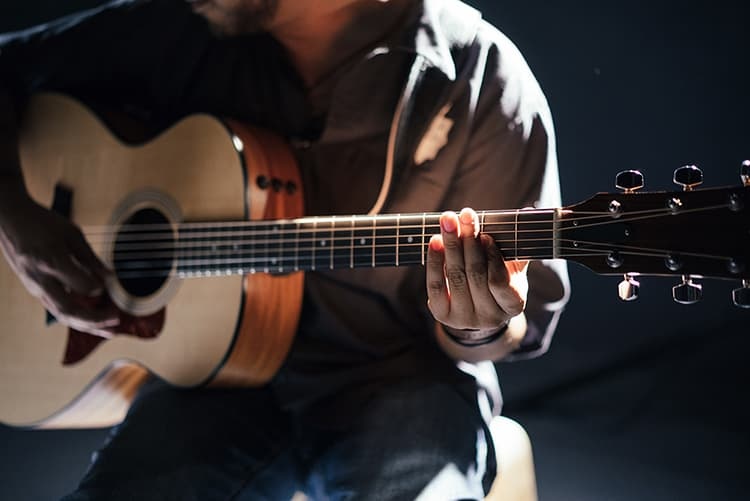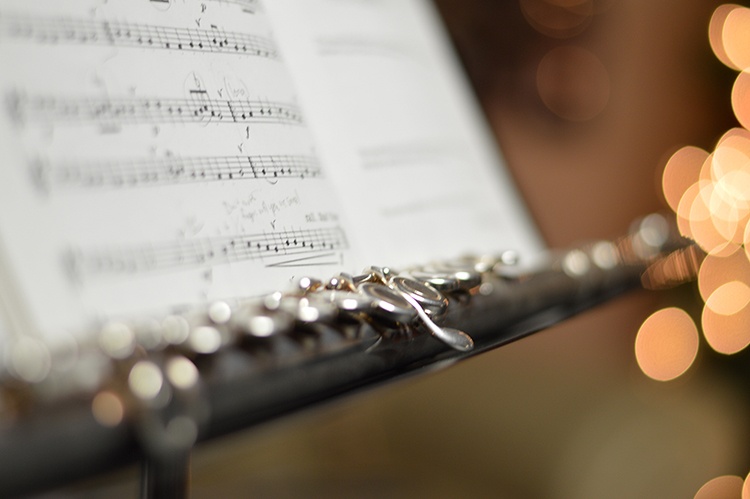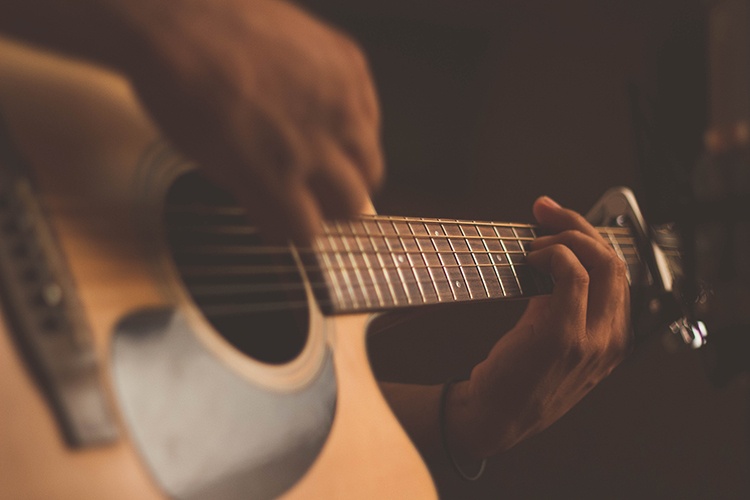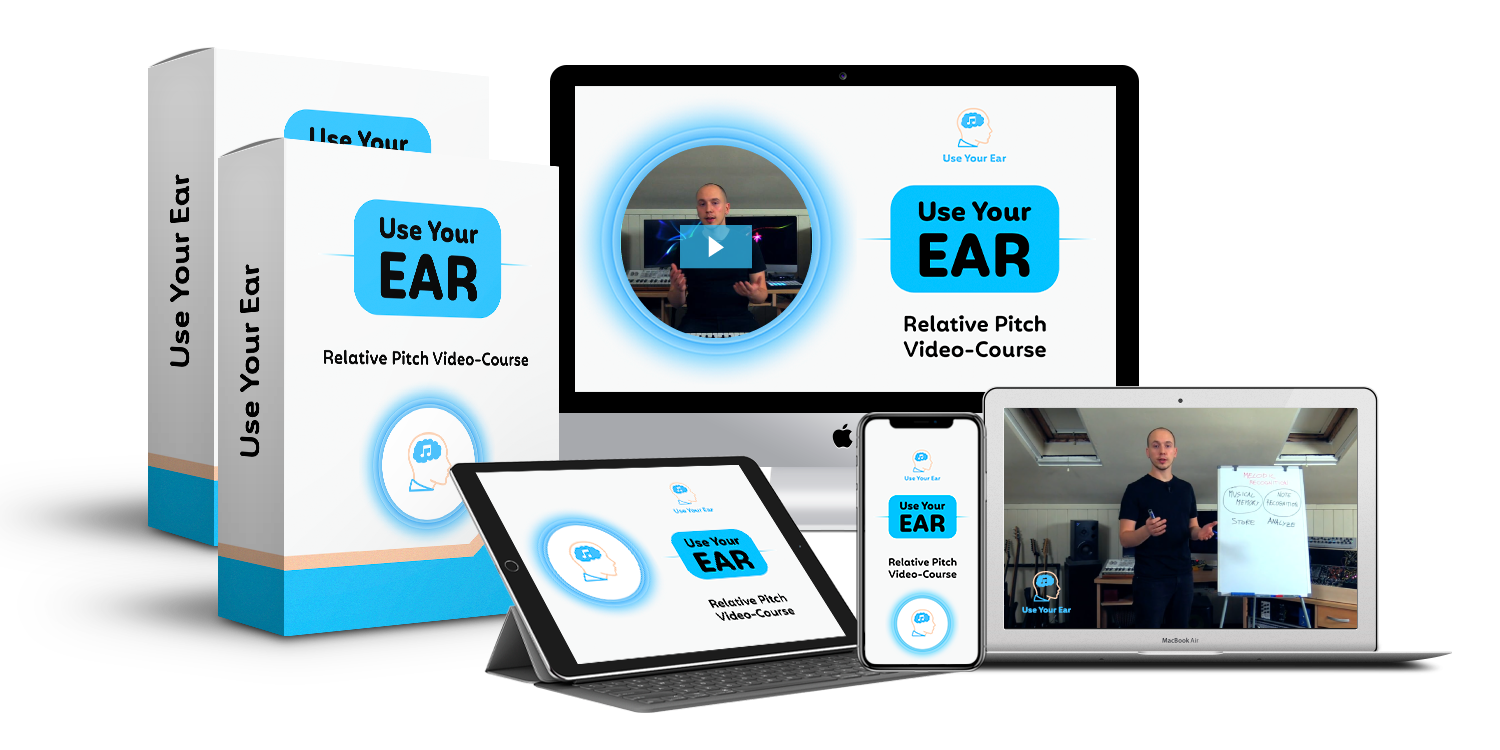Relative Pitch Ear Training
Relative pitch ear training is surely the most important activity for musicians/singers to practice and get better at. In music, relative pitch is the ability to identify or re-create a given musical note/chord in comparison to a reference note/chord. This skill is the foundation of your sense of musicality. It is incredibly useful for musicians, as it allows them to quickly figure out chords and melodies by ear, improvise freely, produce more creative musical pieces, effortlessly sing or play in tune, etc. In this post, we are also going to see the differences between relative pitch and perfect pitch (also called absolute pitch) skills. You will see why it is much better for you to focus on developing relative pitch skills instead of perfect pitch skills (even though you might be currently thinking the opposite).

What does it mean to have relative pitch?
Have you ever wished you could sing or play an instrument without having to read sheet music? Or maybe you've seen a musician "jamming" with other musicians and wondered how they're able to do that on the fly. Well, relative pitch skills allow you to identify pitches by ear.
Musicians who have relative pitch can sing or play any sound they hear - or create in their minds - seamlessly.
Although some people may have naturally developed a more accurate sense of pitch than others (usually those people were encouraged to sing and develop their musicality in their childhood), everyone can develop the ability to identify pitches with ear training exercises, no matter their current level or their age.
Difference between relative pitch and perfect pitch
It's important to understand that relative pitch works in a contextual way. That means when you have relative pitch, you can recognize the function of a chord or note relative to the tonal center. For example, you can recognize the 5th-degree note or the 3rd-degree note once you know the tonic note (first-degree note), which implies you understand the harmonic structure of the entire scale of the song. You might think doing this requires a lot of music theory knowledge. That’s absolutely not true. You can learn the music theory elements needed to develop this skill in less than 1 hour. So if you’re a music theory newbie, you shouldn’t get discouraged by that.
On the other hand, perfect pitch is the ability to recognize notes or chords without the need to have a context or reference. That means if you have perfect pitch and hear a C# played, you can recognize it straight away, even if you don't have any other reference.

The biggest problem with perfect pitch (also called “absolute pitch”) is that rigorous scientific studies show that it can only be developed in early childhood when brain plasticity is at its maximum potential. So if you’re more than 6 years old and you don’t have absolute pitch, it doesn’t make sense to try practicing absolute pitch ear training or to search for a perfect pitch ear trainer app. If you do so you’re going to waste your time and get really frustrated.
But you shouldn’t absolutely worry about not being able to develop perfect pitch because great relative pitch skills could be developed at any age, and they allow you to seamlessly recognize chords and melodies by ear, exactly as perfect pitch skills do. Indeed, most of the great musicians you admire don’t have perfect pitch skills but only have relative pitch skills. Moreover, we can also argue that relative pitch are better than perfect pitch skills in some important aspects:
We lose perfect pitch skills as we age. There are multiple cases of professional musicians/orchestra directors that share their dramatic experiences about losing their perfect pitch skills as they get older while not having developed reliable relative pitch skills yet. Check out this video for more about that.
Scientific studies show that people with perfect pitch have more difficulties with transposition than people with relative pitch.
People with perfect pitch are usually thrown off by music that’s not tuned at standard tuning (440Hz). Most music nowadays it’s tuned at 440Hz but there is still a lot of old music and also modern classical music tuned at other frequencies than 440Hz. For example, 432Hz is a different tuning that’s often used.
As we’ve already explained, with perfect pitch skills, you don’t recognize the general harmonic context (the key, scale, harmonic structure of the piece). You just identify the note/chord alone. But in real life, recognizing the general musical context behind the note/chord you have identified (with relative pitch, you seamlessly identify both the note/chord and the context together) is very useful because it gives you a lot of information about the entire scale pattern, or chord pattern you should visualize on your instruments in order to jam over a given piece of music or just to create effective variations around the musical idea at hand.
The takeaway from this is: Not only you should focus on training relative pitch skills because you can’t develop absolute pitch after early childhood, also people who have absolute pitch should also focus greatly on relative pitch ear training.
Importance of relative pitch ear training
By understanding the relationships between notes, a musician can better understand the overall harmonic structure of a piece of music and how to create their own melodies and improvisations within that framework. Additionally, relative pitch ear training can help a musician to better identify harmony, chord progressions, and counterpoint in music.
In short, relative pitch skills to a musician are like language skills to a writer. A writer who makes lots of grammar mistakes and uses words without knowing their meaning will likely annoy the reader. Similarly, a musician/singer who lacks in relative pitch skills isn’t going to have a deep enough understanding of the musical language to be able to produce or re-produce a beautiful and entertaining musical performance.
This is why relative pitch training is an essential skill for any musician who wants to improve their musicianship. By taking the time to develop this skill, musicians can open up new doors in their musical journey.

Relative pitch ear training allows you to:
- Transcribe melodies and chords by ear on the fly.
- Understand the harmonic structure of a song (key, scale, cadences, etc.).
- Develop your musical memory.
- Intuitively play music on your instrument.
- Develop your voice pitch training skills and effortlessly sing/play in tune.
- Identify scale degrees and chord degrees.
Relative pitch ear training exercises
There are numerous relative pitch exercises that you can practice to develop relative pitch. However, most of the resources and exercises online, including most relative pitch trainer apps, are ineffective while others are outright wrong. This is because they are based on atonal ear training approaches like the traditional interval method.
Also, most students struggle with ear training because they are practicing ear training exercises that are too difficult for them. These exercises are not adequate for their current level of skills, so they end up frustrated and often give up on ear training. Ear training skills work in a very specific way, so it is very important to practice basic skills before going on to more advanced skills.
One of the 5 major flaws of the interval method is that it unintentionally asks students to perform very difficult tasks from the beginning of their practice. So this method doesn't take into account how ear training skills develop, as a consequence it is far from being a gradual step-by-step approach to ear training, making it arduous for learners to develop relative pitch.


Rigorous scientific studies brought to light many other issues related to the traditional interval ear training method, which are much worse than the one I’ve just mentioned above. Check out this video to know more about that.
Another frequently adopted but ineffective approach to developing relative pitch skills is “the trial and error” approach. This approach involves trying to figure out the melody or chord that you are hearing by playing different notes until you find the right one. This method only involves very basic pitch matching skills but won't take you any further in ear training. This is not going to allow you to recognize melodies and chords by ear on the fly (without helping yourself with any instrument).
So how should you practice ear training?

The best way to learn relative pitch
Based on rigorous scientific studies, our perception of musical pitch is context-dependent. So it makes no sense to embark on relative pitch training using an atonal method like the interval method. That means the best way to learn relative pitch is to adopt a tonal approach. In simple words, this means that the ear training exercises that you practice should always establish a musical context (meaning: a tonality or key). This enables us to develop a basic internalization of the tonal context, which is the fundament for developing an intuitive connection with music.
Then when we are comfortable recognizing simple melodies and chord progressions within the context of the key, we are ready to understand more advanced contexts and perform more complex exercises such as intervals recognition exercises.
Want to know how to develop relative pitch for yourself? - we can help you
Great musicians recognize music by understanding the sensations that each musical note or chord assumes inside the harmonic context of the musical piece and that allows them to effortlessly and quickly recognize chord progressions, melodies, and more. You, too, can develop this invaluable skill using the groundbreaking ear training method we have created.
Relative Pitch Video-Course
With our Use Your Ear relative pitch training course, you will:
- Get a scientifically proven, step-by-step approach to ear training that has helped thousands of students master their perception of musical pitch and establish themselves as musicians.
- Develop an instinctive sense of musicality and learn to apply your relative pitch skills in real-time, when jamming with other musicians.
- Get proven exercises that will allow you to develop advanced relative pitch skills no matter your current level or age, thereby saving you a lot of time spent practicing ineffective exercises that don't work.
- Truly learn to play music by ear effortlessly, no matter the instrument you play.
- Learn to sing/play in tune without any conscious effort.


Free Use Your Ear Workshop
If you want to get a taste of what the Use Your Ear course can offer you, we invite you to attend our free online workshop.
In this workshop you will:
- Discover a science-based model that reveals the secrets great musicians use, without even knowing it, to recognize music on the fly ... secrets that you can use to develop a pro-caliber musical ear.
- Try out our step-by-step relative pitch training method to develop your musicality the fast and easy way. See first-hand how our students quickly experince music on a much deeper level — no more tedious mental math on intervals.
- Practice effective exercises during the workshop. You’ll discover the right way to recognize melodies and chords, and you walk away with practical direction based on your own skill level. You will know how to improve - no more guessing.
- Learn which exercises to avoid at all costs — ineffective exercises prescribed by generations of well-meaning music teachers that doom 99.9% of promising musicians to failure — avoid years of frustration and lack of progress.
- Get TWO GIFTS, to help you develop your relative pitch skills following the Use Your Ear method.
This workshop will give you the tools and knowledge you need to get started on your journey to becoming a great musician.
Free Use Your Ear WorkshopIndividual online lessons
Get started on your relative pitch training journey today. We offer individual online lessons with our expert relative pitch ear training teachers, all qualified in teaching following the principles included in the Use Your Ear method. These private sessions are tailored specifically to your needs and will help you go from zero to advanced relative pitch skills in the most effective way. You will be able to work at your own pace and receive feedback in real time.
Individual online lessons
How our students learn to recognize melodies and
chords by ear in just a few months
Check out how our students go from zero to recognizing melodies and chord progressions by ear in a few months, following the Use Your Ear method.
Who are our courses for?
Our courses are designed for any musician who wants to improve their relative pitch skills or develop them from scratch. Whether you are a beginner or an experienced musician, our courses will help you take your playing or singing to the next level. If you have always wanted to develop relative pitch skills but didn't know how to get started, our Use Your Ear course is perfect for you.
By signing up for the Use Your Ear course, you will develop skills that will help you in every aspect of your musical life. You will be able to:

Sing or play in tune without effort.

Play by ear with ease.

Understand music better and faster.

Transcribe notes/chords quickly and accurately.

Compose better music faster.

Improvise with confidence.
Don't wait any longer. Start your journey with the Use Your Ear course today!




